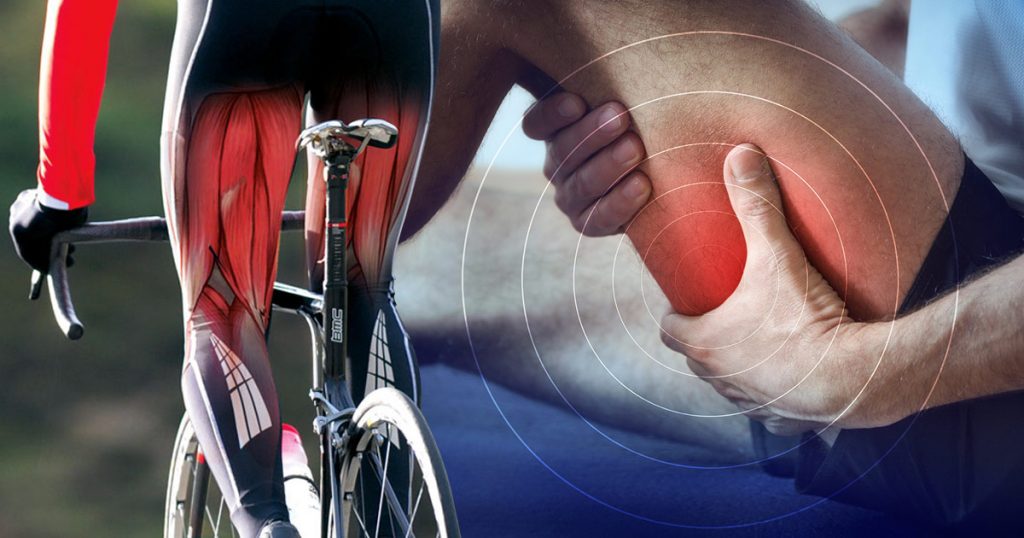A hamstring injury can make simple movements like walking or sitting uncomfortable. Many fitness enthusiasts also experience hamstring pain while cycling, which raises an important question: Can cycling actually help with recovery, or will it make things worse? The answer depends on timing, technique, and how the injury is managed.
Understanding a Hamstring Injury
The hamstrings are a set of three muscles that run along the back of your thigh. They help bend the knee and extend the leg behind the body. When these muscles stretch or tear beyond their limit, it leads to a hamstring pull.
Symptoms can range from mild tightness and soreness to sharp pain, bruising, or swelling. Sudden movements, sprinting, or poor warm-ups often cause these injuries. Jumping back into intense workouts too soon can raise the chance of getting hurt again. Learning what to do for a hamstring pull early can prevent long-term problems and speed up recovery.
Is Cycling Good for Hamstring Injury Recovery?
Cycling can support hamstring recovery, but it depends on the injury’s severity and recovery stage. For mild strains, low-resistance cycling helps keep the leg active without adding too much pressure. For more serious injuries, it’s better to rest completely before resuming activity.
Once the pain and swelling ease, light cycling on a stationary bike can support recovery. The rhythmic motion improves circulation, helping deliver oxygen and nutrients that aid healing. Begin with short, easy rides, about 10 to 15 minutes, with little to no resistance.
Concentrate on steady, controlled pedal strokes instead of speed. As the muscle gets stronger, you can slowly extend your sessions and add a bit more resistance.
How to Cycle Safely During Recovery
Riding with a hamstring injury requires the right bike setup and body alignment. Even small adjustments can make a big difference in preventing strain.
Follow these safety tips when cycling during recovery:
- Adjust your saddle height: Maintain a slight bend in the knee at the bottom of each pedal stroke.
- Avoid standing while pedaling: Seated pedaling keeps the movement controlled and reduces stress on the hamstrings.
- Use low resistance: Increase intensity gradually as the muscle gets stronger.
- Warm up and cool down: Gentle stretches before and after cycling prevent stiffness.
- Stop immediately if you feel pain: Persistent pain means your hamstring needs more rest.
These habits not only support healing but also reduce the risk of developing hamstring pain while cycling in the future.
When Cycling Causes Hamstring Pain
While cycling can help treat a pulled hamstring, poor posture or bike setup can also cause hamstring discomfort. A seat that’s too high or too far back may overstretch the muscle. Likewise, pointing your toes downward when pedaling puts unnecessary tension on the back of your thigh.
To prevent these issues, focus on maintaining proper form. Keep your core engaged and pedal smoothly without jerky movements. Regular stretching for the hamstrings and hips helps balance flexibility and strength. Strengthening your glutes also reduces hamstring overload, since weak glutes force the hamstrings to work harder during rides.
Other Treatment Tips for a Pulled Hamstring
Cycling plays a valuable role in treating a pulled hamstring, but it works best when paired with other recovery methods.
Here are additional steps that support healing:
- Rest: Stop any activity that causes pain and give your hamstring time to recover.
- Ice: Place a cold pack on the injured area for about 15 to 20 minutes a few times a day to ease pain and swelling
- Compression: Use an elastic bandage or wrap to gently support the thigh and control inflammation.
- Elevation: Prop your leg up on a pillow or cushion to lessen swelling and improve blood flow.
- Physical therapy: Partner with a physical therapist to rebuild strength and flexibility through safe, guided exercises.
- Massage therapy: Promotes blood flow and relieves tightness in surrounding muscles.
- Heat therapy: Apply gentle heat once the swelling has gone down to relax the muscle.
- Stretching: Perform light, pain-free stretches to prevent stiffness and maintain flexibility.
- Strength training: Include glute bridges, hamstring curls, and Romanian deadlifts to rebuild stability.
- Hydration and nutrition: Eat well and stay hydrated to support muscle repair.
Combining these treatments with gentle cycling helps the muscle recover in a balanced, low-stress way.
Preventing Future Hamstring Problems
Once the hamstring has healed, it’s important to protect it from future injury. Returning to full training too quickly is one of the most common mistakes. The muscle may feel fine, but it may still lack full strength and flexibility.
To stay injury-free, ease back into cycling and other physical activities gradually. Keep regular stretching and strengthening routines for your legs and core. Check your bike setup every few months to ensure it still fits your body properly.
If you continue to experience hamstring pain cycling even after recovery, reassess your position or riding technique. Persistent discomfort may indicate muscle imbalances or overuse that require professional evaluation.
Building Strength and Confidence Again
Recovery from a hamstring injury doesn’t happen overnight, but with care and patience, you can get back to cycling safely. Pay attention to your body and allow your muscles the rest they need to rebuild.
Cycling, when used correctly, can become a valuable part of your recovery process. It helps rebuild strength, maintain cardiovascular fitness, and restore confidence after injury. Combined with proper treatment and smart training habits, it can help you come back even stronger, ready for longer and safer rides ahead.
